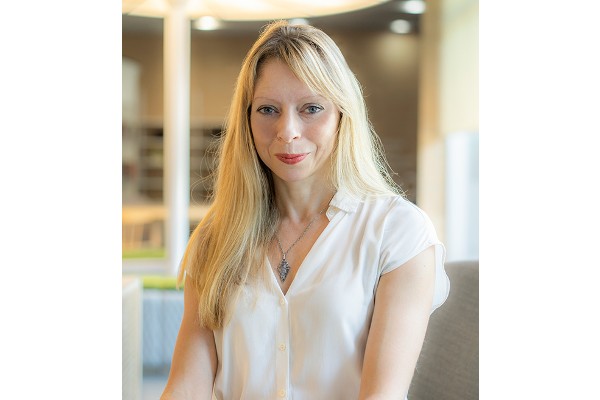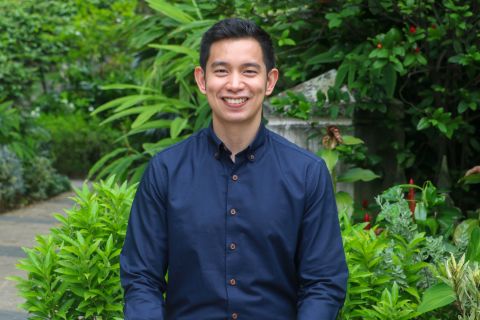
By Jovina Ang
SMU Office of Research – Climate change is affecting Singapore in a big way. In the past three years, there have been significant fluctuations in rainfall pattern, as well as a substantial rise in urban heat in Singapore.
“Having a robust predictive model for understanding how rainfall patterns might be changing is very important, especially for countries like Singapore where water security is a concern,” Associate Professor Fiona C. Williamson conveyed to the Office of Research.
“The increased frequency and intensity of rainfall that has been causing flash floods in recent years is concerning. This is not something we can ignore for a small city island country like Singapore as it has a follow-on effect on urban planning such as the development of new protection measures and infrastructure to mitigate the effects of climate change,” she continued.
It is for this reason that Professor Williamson would like to reconstruct a long-term model of rainfall for the region – to identify rainfall trends.
Constructing an accurate predictive model of rainfall is a mammoth task that requires several decades of data to establish a solid baseline.
In an ideal world, a model that is based on a minimum of 100 years of data is what most researchers would aim for – to comprehensively capture decadal anomalies such as frequency of extreme events like floods, droughts and so on.
However, given the abundance of rainfall data from 1960 onwards, Professor Williamson intends to focus her data collection efforts on the period from 1900 to 1960 to fill in the gap. This long-view will also cover a period known as ‘the great acceleration’ where man-induced environmental changes have most changed the climate.
Other than collecting rainfall data in Singapore, she intends to collect data in West Malaysia and Northern Sumatra to provide a comprehensive view of rainfall across the geographical areas adjacent to Singapore.
Studying the rainfall patterns during this period will also provide an avenue for Professor Williamson to delve into the anthropogenic or human-caused effects on precipitation. In so doing, Professor Williamson hopes to gain a thorough understanding of what pre- to early anthropogenic rainfall ‘normals’ were so that comparisons and deviations can be ascertained vis-à-vis today’s rainfall patterns.
The period from 1900 to 1960 was a period of continual environmental degradation. It encompassed two world wars, followed by further industrialisation, urbanisation and large population increases in Singapore, West Malaysia, and northern Sumatra. This modernisation also saw a surge in plastic consumption and mass consumerism.
All these factors had significant impact on the nature in these areas – the earth, ocean, carbon footprint and temperature and consequently, rainfall, which may be one contributing factor towards changing rainfall patterns since 1960.
The research
Professor Williamson has recently secured an MOE Academic Research Fund Tier 2 grant for her research that will extend and expand the historical instrumental long time-series records of meteorological data and extreme climate-induced events. It will commence in February 2024 following the appointment of a post-doctoral fellow.
Given the complexity of the research, Professor Williamson will collaborate with six other renowned and established researchers working at the forefront of environmental and climate history, risk and impacts assessment, and historical climatology.
They include SMU’s own Assistant Professor Terry van Gevelt, who is an interdisciplinary social scientist specialising in climate impacts; Dr. Srivatsan Vijayaraghavan from the National University of Singapore, who focuses on climate change effects on water resources; Professor David Nash, who is a historical climatologist at the University of Brighton, UK; Dr. Matthias Wong, who is an expert in driving small-scale citizen science campaigns using Zooniverse; Dr. Rob Allan from the UK Met Office Hadley Centre), who is a climate scientist specialising in ENSO (El Niño–Southern Oscillation); and Dr. Clive Wilkinson, who is affiliated to the Climatic Research Unit at the University of East Anglia.
The two main sources of data will be obtained from historical missionary archives: records left by US and UK missionaries who travelled to the east, as well as the logbooks of ships that travelled around this region, including those of the British Royal Navy.
In addition, the research team will conduct in-person archival and online research from within and outside the three regions to build this comprehensive model of rainfall.
It is Professor Williamson’s intent to add this new data to a pre-existing collection of terrestrial meteorological data recovered from colonial government records for Singapore and Malaysia compiled by herself, but yet to be made available to any scientific database or organisation.
Digitising this huge amount of data would not be possible given the resource constraints of the research team, which is why the team intends to create a project in Zooniverse and invite members of the public to help with the digitisation effort.
Implications of the research
There are three important implications of this research.
One, it will provide a baseline of rainfall patterns which will help in accurate prediction of rainfall.
Two, it will provide a basis of how climate change, specifically rainfall, affects societal changes.
And three, it will help the governments of these regions to better understand and thus plan and mitigate the effects of rainfall.
Back to Research@SMU November 2023 Issue
See More News
Want to see more of SMU Research?
Sign up for Research@SMU e-newslettter to know more about our research and research-related events!
If you would like to remove yourself from all our mailing list, please visit https://eservices.smu.edu.sg/internet/DNC/Default.aspx

